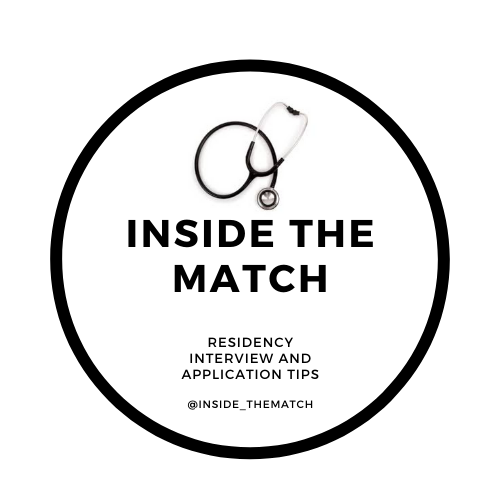Tips To Shine on a Plastic Surgery Rotation
Written by Trey Cinclair and Imran Rizvi
Congratulations and welcome to the field of plastic and reconstructive surgery, where the anatomy knows no bounds! The word “plastic” originates from the Greek word “plastikos”, which means to mold or shape. The field spans many subspecialties, including general reconstructive, aesthetics, microsurgery, hand, pediatric craniofacial, and more; all have a primary goal of manipulating soft tissues to restore form and function for the patient.
The plastic surgery sub-I experience, although potentially daunting, will be one of the most memorable times of your life! You will be working long hours, meeting future colleagues, dipping your feet into what it would be like to train at that institution, and learning simultaneously about the field and yourself. Our sub-I experiences are what made us fall in love with plastic surgery, and we hope your experiences will be no less fruitful. Use this guide as a diving board as you prepare for one of the most fulfilling and challenging journeys yet!
Attitude and Etiquette
The basics of doing well on this rotation can be summarized in a handful of words: adaptability, initiative, eagerness, humility, and integrity. Sub-Is are essentially month-long job (residency) interviews; put yourself in the residents’ and attendings’ shoes and ask, “who would I like to work with for 6+ years?” Expect to work long days and learn as much as you can. Remember, you’re not only there to work on your surgical skills, but also to improve how you can efficiently contribute to the team. Show your team what you want them to know about you (i.e., there should be no job too small for you if you’d like your team to know you’re a humble person). Be adaptable to new situations, attending/resident preferences, and new services/institutions. Never complain, be friendly and outgoing (to EVERYONE on and off service), and maintain a positive attitude amidst any stressful situations. Plastic surgeons value hard work and initiative in medical students above all else, and if you are showing you are teachable, affable, and committed to growth, you will be in a good spot!
2. Skills and Competence
Rounds: (the fun before the fun)
Be early to rounds! Find the intern and help them streamline the process (get numbers, review charts, prepare lists, retrieve dressing supplies, offer to help with any notes).
Stay involved. Write down the plans discussed by the team so you can check back in on them later if you have time.
Flap Checks: In general, flap checks are done Q1 hour for the first 24 hours and then Q4 hours for the first 48 hours. Make sure you have the doppler probe with you on rounds and some ultrasound jelly to help facilitate these checks.
Plastic surgeons are very intentional about dressings, so make sure your supplies bag/bucket is well stocked! Always carry key items with you (i.e., pen light, xeroform, bacitracin, kerlex, shears, tegaderms, tape). Anticipating what certain patients may need and having them "at the ready" will make you a star!
The Operating Room: (this is where you shine!)
Get to know people! Write your name on the board, introduce yourself to scrub techs and nurses, and offer to be helpful! They are your lifelines to keep you out of trouble.
Know your PATIENT. Know their 1-liner and pertinent history. This alone will put you in the top 5% of medical students!
QUESTIONS:
Know your ANATOMY. Blood supplies to the flap, innervations to musculature, etc. All fair game, and you will be pimped (asked questions) about these.
Know the most common complications of the procedures. Anticipate and know how we can keep our patients safe.
Before the case, help transfer the patient to the OR table, position arm boards, and grab gloves for your residents/attendings. Everything you do in the OR is noticed, even if not obvious!
During the case, never dominate the conversation. Staying quiet until spoken to and observing is usually the best course of action. Students can be helpful in holding suction, retracting, or optimizing visualization. After you get comfortable with OR dynamics, try and anticipate the next steps and what the surgeon/resident will need. Remember, surgery is a dance, and all parties need to be in sync to groove! Every attending/resident is also different, so be cognizant of how they like to do certain things (drain stitch, dressings) so that you can stay more involved.
After the case, help place dressings. Help transfer the patient to the stretcher. Stay off your phone! It may help to have a plastic surgery textbook with you to read in between cases.
On Call: (plastic surgery takes calls for hand, face, and primary plastic surgery)
Common things you’ll see and can read up on include: facial/craniofacial trauma, hand lacerations, metacarpal fractures, hand/finger infections, pressure/decubitus ulcers, bites, infiltrations, and replants.
Different institutions will have different call schedule expectations. Communicate with your residents and co-sub-I’s EARLY. This is the best way to get a true feel of how residency might be at that institution!
Clinic: This may be your opportunity for one-on-one time with the attending without residents present. Opt to wear business casual clothes with your white coat. If time permits, read up on the patient list the day prior and have actionable plans to present. Many students don’t take advantage of clinic time, so going the extra mile here will truly set you apart!

